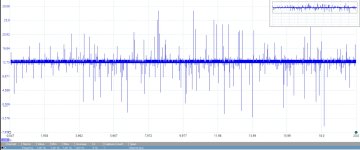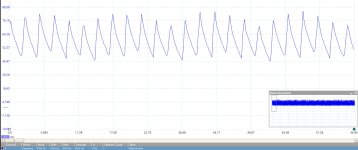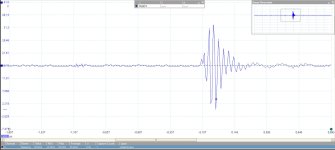Hello everyone,
I have an Yamaha 40HP 3 cylinder two stroke (6h4) and measured the voltage on the rectifier output with a scope. Without load it looked like a rectified AC voltage up two 50V, with a motorcycle battery connected it was between 13V at idle and 17V at 4000rpm. The voltage is really noisy with a lot of spikes.
Can someone tell if the engine has actually a rectifier / regulator combination or if it is just rectified and needs an external regulator? The part number of the build in rectifier should be 6G1-81970-60 based on Yamaha parts catalogue.
I try to determine if this is common behavior and the noise would be smoothened with a bigger battery or if the regulator is damaged. So far I read that on the old outboards 17V is not a rare thing and that special marine batteries should be used that tolerate these voltages, but I am concerned that the spikes will damage some electronics, so if this behavior seems normal I might addd a voltage limiter.
I have another question about the battery sizing: I read in a manual for the 40/50 HP two strokes that a 70Ah battery is recommended. This seems quite big to me. Do you have any experiences / recommendations? I used to run it with a 44Ah battery.
Best regards,
Jan
I have an Yamaha 40HP 3 cylinder two stroke (6h4) and measured the voltage on the rectifier output with a scope. Without load it looked like a rectified AC voltage up two 50V, with a motorcycle battery connected it was between 13V at idle and 17V at 4000rpm. The voltage is really noisy with a lot of spikes.
Can someone tell if the engine has actually a rectifier / regulator combination or if it is just rectified and needs an external regulator? The part number of the build in rectifier should be 6G1-81970-60 based on Yamaha parts catalogue.
I try to determine if this is common behavior and the noise would be smoothened with a bigger battery or if the regulator is damaged. So far I read that on the old outboards 17V is not a rare thing and that special marine batteries should be used that tolerate these voltages, but I am concerned that the spikes will damage some electronics, so if this behavior seems normal I might addd a voltage limiter.
I have another question about the battery sizing: I read in a manual for the 40/50 HP two strokes that a 70Ah battery is recommended. This seems quite big to me. Do you have any experiences / recommendations? I used to run it with a 44Ah battery.
Best regards,
Jan





